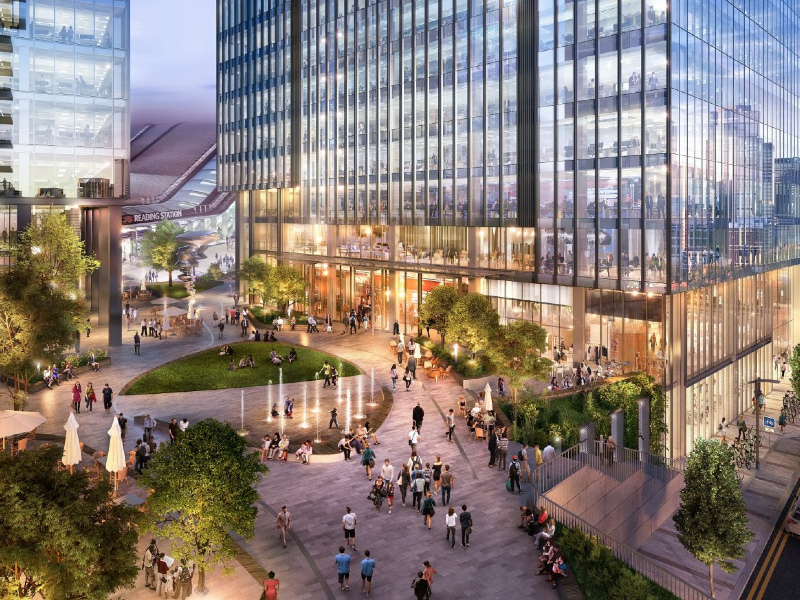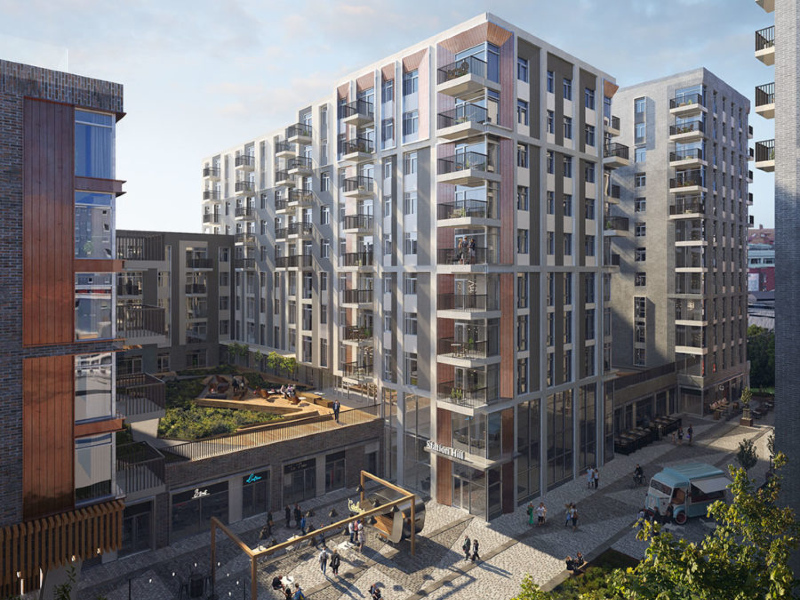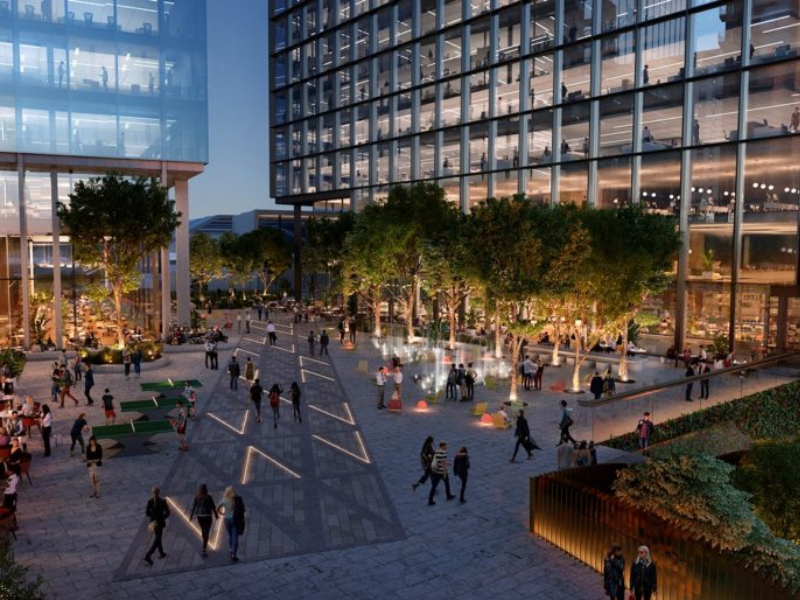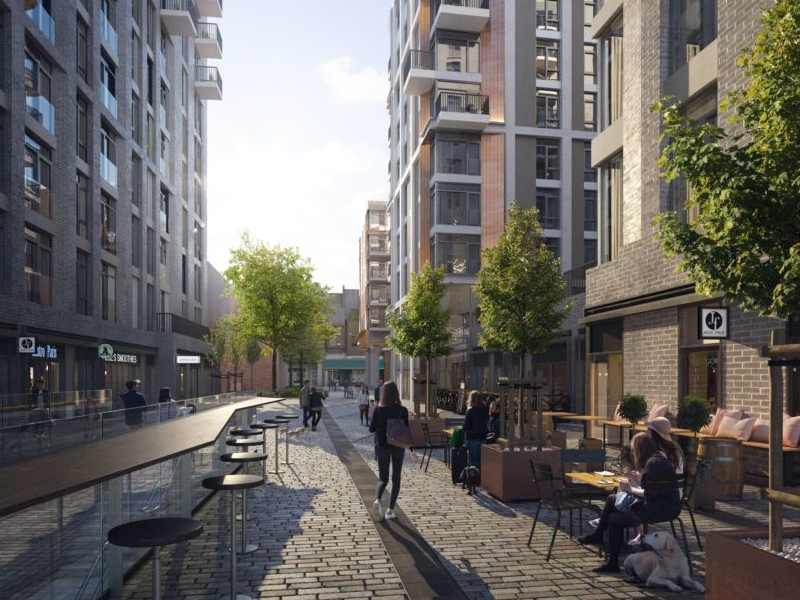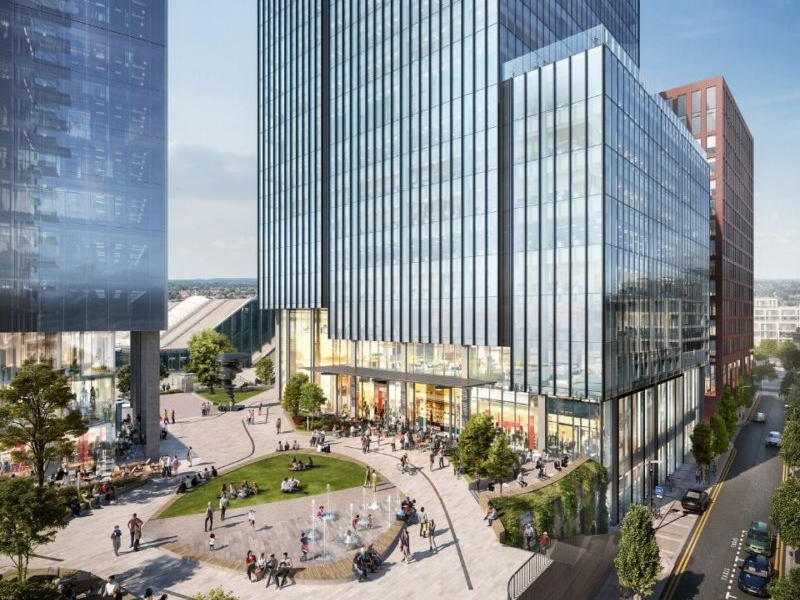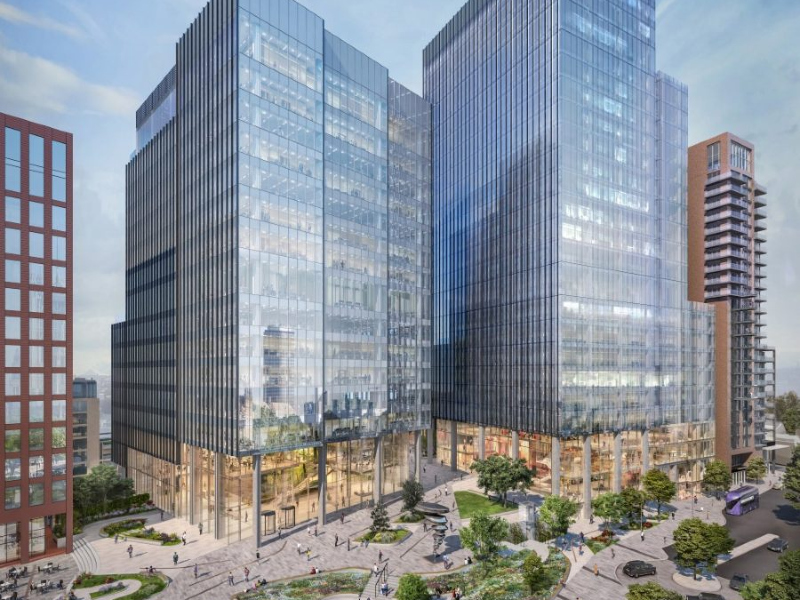Station Hill is a 6.5-acre mixed-use redevelopment project under construction in central Reading town in the UK.
The project is being developed by Lincoln MGT, a joint venture (JV) between Lincoln Property Company and MGT Investment Management. The JV acquired the site from Sackville Developments Reading, a JV between Stanhope and Benson Elliot, in June 2018. The site was home to a temporary events space and the Biscuit Tin coffee shop prior to its redevelopment.
The mixed-use project will involve an estimated investment of £750m ($1.04bn). It will create a new district with contemporary living, working, leisure, and open community spaces.
The redevelopment will deliver new homes, assisted living accommodation, a hotel and office space.
Plans for the first phase of the redevelopment were announced in April 2019 while approvals were secured in July 2019. The approval for the second phase and outline approval for phase three were granted in January 2021. The third phase is expected to be completed in 2026.
Station Hill redevelopment project location
The Station Hill redevelopment project is located in the heart of Reading town. The property is bound by Reading train station to the north, Garrard Street to the south, Thames Tower to the east, and Greyfriars Road to the west.
The proximity of the site to the Reading train station provides local, national and Crossrail connections.
The project is about 24 minutes away from London by train and 38 minutes away from London Heathrow Airport (LHR) by Crossrail.
Station Hill project design
The developers aspire to create a vibrant mixed-use destination, which will serve as a new gateway for Reading.
The project design is focused on creating engaging public spaces that will entertain through events. It is driven by key considerations such as creating a strong identity and providing flexibility through future-proofing, accessibility and connectivity.
The redevelopment will include two acres of new public space accommodating retail areas, restaurants and food halls, as well as community and leisure facilities.
Station Hill redevelopment details
The project is being developed in three phases with a total of 625,000ft² (58,064m²) of modern office space, 1,300 new homes, a 200-bed hotel, 95,000ft² (8,826m²) of retail and leisure space and 835 car parking spaces planned to be constructed.
The first phase of the project is located on the southern side of the site and is bordered by Friar Street. It will deliver 538 new homes for the private and affordable rental market along with approximately 25,000ft² (2,322m²) of commercial and leisure space.
The second phase will include One Station Hill, a 15-storey state-of-the-art office building proposed to be developed at the northern side of the site, facing the Reading station.
ONE Station Hill
As the first commercial office tower on the site, the new One Station Hill office building will provide a thriving office community and help regenerate Garrard Street with dual entrances and leisure spaces. Spanning 275,000ft² (25,548m²), the office building is anticipated to be opened for tenants by early 2024.
The building will feature ground plus 15 floors for office use. It will include approximately 204 cycle parking spaces, 31 showers, eight passenger lifts and a goods lift. The top floor of the building will offer terrace and city views.
The ground and lower ground floors will be connected to the first two floors of the building by an atrium. The first two levels will be dedicated to co-working offices or collaboration areas, while levels three to seven will feature larger office spaces. Levels eight to 14 will have smaller floor space. An office with a terrace will be provided on level 15, while the roof will be used as a screened plant area.
The ground floor of the building has been designed to be transparent and will act as an extension of the green pedestrian path between the station and the existing town centre.
A three-storey portico will be developed at the building’s primary entrance to the north. The north facade is elevated from the ground and will also be the tallest component, facing the railway station and a wide-open space.
The massing at the southern side of the building drops down into Garrard Street. It will have a reduced scale to align with the existing townscape on the southern side. Amenities will include onsite fitness facilities and concierge services, and a technology-based ecosystem that will provide tenants complete control over their workspaces.
The ground floor will house the retail and curated public realm while the rooftop will include a terrace, a bar and a lounge.
Sustainability features of One Station Hill
The One Station Hill building has been designed to achieve a Building Research Establishment Environmental Assessment Method (BREEAM) five-star rating. It will include sustainability features such as 8% lower emissions compared to a similar-sized Grade A office building.
Furthermore, it is expected to use 20% more efficient lighting than British Council of Offices (BCO) standards and 10% more efficient glazed facade than BCO standards.
Construction details
The south phase construction is in progress while construction of the first phase is expected to be completed by the end of 2022.
The demolition of the Garrard Street car park to facilitate the construction of the new mixed-use community at Reading began as part of the second phase in August 2021.
The construction of ONE Station Hill is expected to start by the end of 2021.
Contractors involved
Lincoln MGT selected CallisonRTKL as the master planner and architect for phases one and three and Gensler as the architect for phase two of the project. LDA was appointed to provide landscaping design for the mixed-use development.
DP9 is the planning consultant for the project, while Cityscape Digital, a creative agency based in the UK, was contracted for visualisations. England-based chartered surveyor GIA provided daylight, sunlight, and overshadowing assessment services for the project.
Environmental consultancy services specialist Waterman provided environmental impact assessment (EIA) services for the project. Peter Brett Associates (PBA) provided traffic and transportation consultancy services while Hatch Regeneris served as the socio-economics and health consultant. RWDI was responsible to provide wind microclimate consultancy services.
Danish engineering company Ramboll received a contract to provide structural and civil engineering services for the project, while Hoare Lea and Partners acted as the building services engineer and energy and sustainability consultant. The cast is the construction consultant for the project.
JLL and Hatch Real Estate are responsible for office space management.

